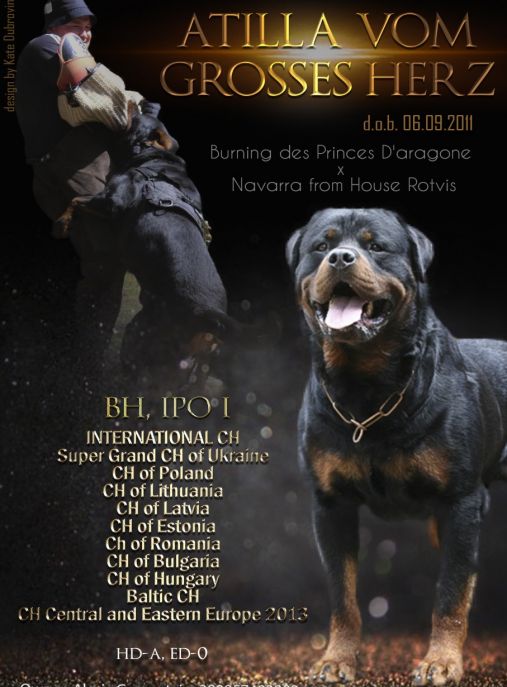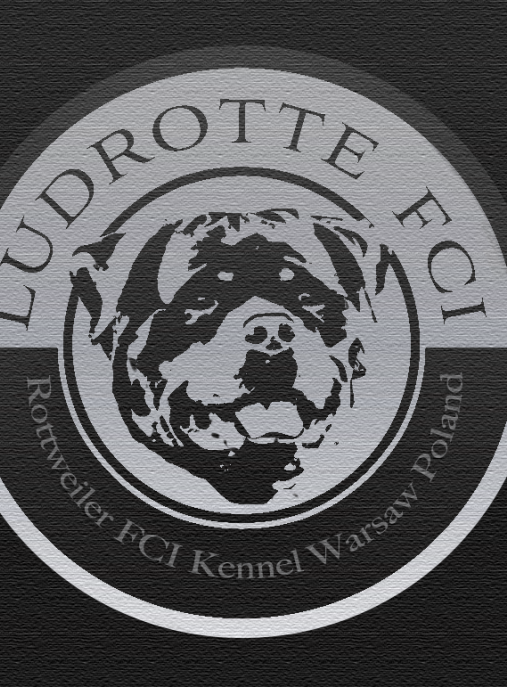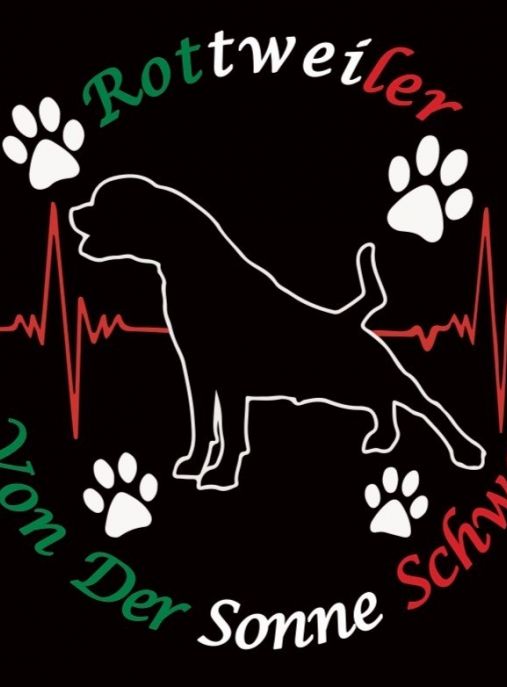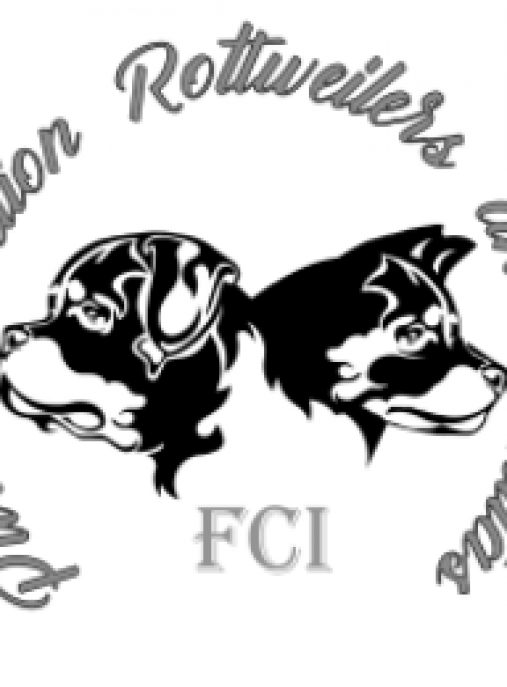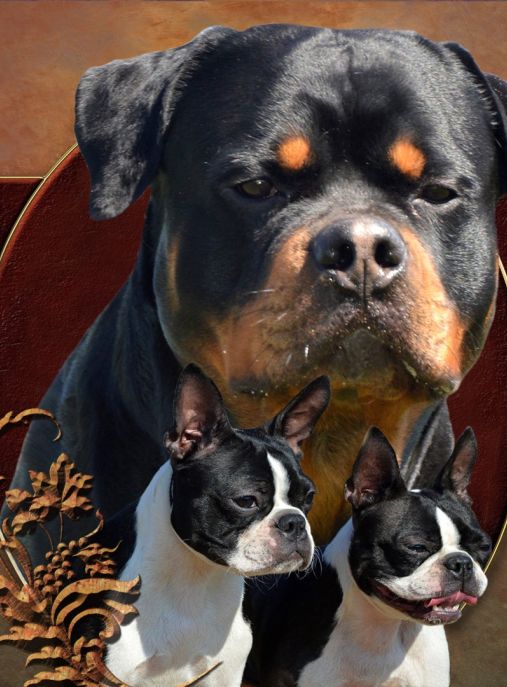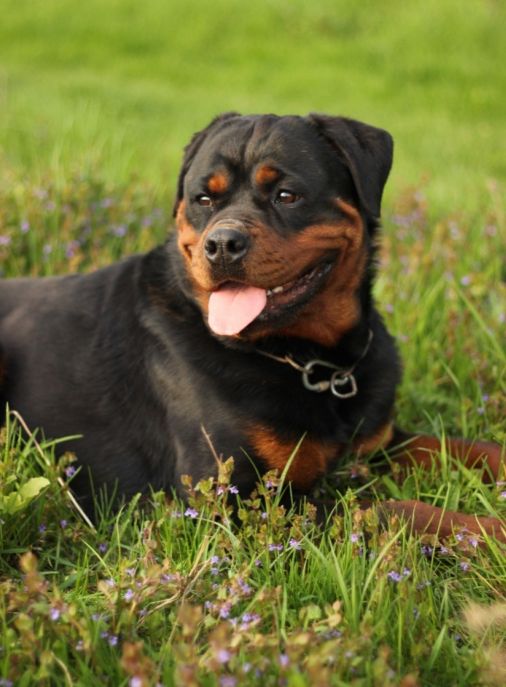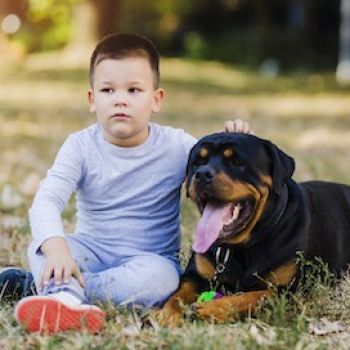The Rottweiler, also known as the Rottie, is a powerful and robust breed that exudes strength and confidence. With its distinctive black coat and muscular build, this breed is easily recognizable and commands attention wherever it goes. Renowned for its loyalty, intelligence, and protective nature, the Rottweiler has become a popular choice for families, working professionals, and dog enthusiasts alike.
The history of the Rottweiler can be traced back to ancient Rome, where it was used as a herding and guarding dog. These dogs accompanied the Roman armies as they conquered new territories, and their primary role was to protect the soldiers and their livestock. As the Roman Empire expanded, these dogs settled in the town of Rottweil in Germany, which eventually led to their name.
According to the FCI (Fédération Cynologique Internationale) typology, the Rottweiler belongs to Group 2: Pinscher and Schnauzer - Molossoid breeds - Swiss Mountain and Cattle Dogs. This group includes breeds that share common characteristics such as a strong build, protective instincts, and a history of working alongside humans.
Rottweilers are known for their versatility and adaptability. They excel in various roles, including search and rescue, police and military work, therapy and assistance, and as loyal family companions. Their intelligence and eagerness to please make them highly trainable, but they require a firm and consistent hand in their upbringing to ensure they reach their full potential.
In terms of physical attributes, Rottweilers are large and muscular dogs. Males typically stand between 24 to 27 inches (61 to 68 cm) at the shoulder, while females are slightly smaller, ranging from 22 to 25 inches (56 to 63 cm). The weight of a Rottweiler can vary depending on its gender and overall build, but on average, males weigh between 95 to 135 pounds (43 to 61 kg), and females weigh between 80 to 100 pounds (36 to 45 kg).
The Rottweiler's coat is short, dense, and weather-resistant. The breed's signature coloration consists of a black base coat with distinct rust-colored markings on the cheeks, chest, legs, and eyebrows. This striking color combination adds to the breed's overall appeal and contributes to its regal appearance.
When it comes to their temperament, Rottweilers are known for their loyalty and protective nature. They are naturally reserved and aloof with strangers, making them excellent guard dogs. However, with proper socialization and training from an early age, they can be friendly and affectionate towards their family and friends. Rottweilers are known to be great with children, often displaying patience and a gentle demeanor.
The average lifespan of a Rottweiler is around 8 to 10 years. However, with proper care, nutrition, and regular exercise, some Rottweilers have been known to live well into their early teens. Like all large breeds, Rottweilers are prone to certain health issues, including hip and elbow dysplasia, heart conditions, and certain types of cancers. Regular veterinary check-ups and a balanced diet are essential to ensure their overall well-being.
One interesting fact about Rottweilers is their incredible strength. They possess an impressive bite force, which can exert pressure of up to 328 pounds per square inch (psi). This strength, combined with their protective instincts, makes them formidable guardians and deterrents to potential intruders.
In conclusion, the Rottweiler is a breed that embodies strength, loyalty, and intelligence. With a rich history rooted in ancient Rome, these dogs have evolved to become versatile working dogs and beloved family companions. Their striking appearance, coupled with their protective nature, makes them a popular choice for those seeking a loyal and devoted canine companion. However, it is important to remember that responsible ownership, proper training, and socialization are crucial to ensure that these magnificent dogs thrive in any environment.
The Rottweiler, with its robust and powerful physique, is a breed that exudes confidence and loyalty. Known for their protective nature and unwavering devotion to their families, Rottweilers have earned a reputation as excellent guard dogs and loyal companions. In this text, we will delve into the character of Rottweiler dogs, exploring their behavior, how to raise them, and the most effective training methods for this breed.
One of the defining characteristics of Rottweilers is their calm and composed demeanor. They possess a natural self-assurance that makes them excellent at assessing situations and reacting accordingly. This level-headedness, combined with their inherent protective instincts, makes them an ideal choice for families seeking a reliable and watchful companion.
Rottweilers are known to be incredibly loyal to their families. They form strong bonds with their owners and are always eager to please. This loyalty extends to their protective nature, as they will go to great lengths to defend their loved ones. However, it is important to note that their protective instincts should be channeled and properly managed through training and socialization.
When it comes to raising a Rottweiler, early socialization is crucial. Exposing them to various people, animals, and environments from a young age helps them develop into well-rounded and confident adults. This breed thrives on positive reinforcement and consistent training methods. Harsh or punitive techniques can lead to fear or aggression, so it is essential to use gentle yet firm methods to establish boundaries and reinforce desired behaviors.
Rottweilers are intelligent dogs that require mental stimulation and physical exercise to prevent boredom and potential behavioral issues. Regular exercise, such as long walks, jogging, or playtime in a secure area, is essential to keep them physically fit and mentally engaged. Engaging them in obedience training, agility, or even advanced tricks can provide the mental challenges they crave.
Proper training is vital for a well-behaved Rottweiler. Basic obedience commands, such as sit, stay, and come, should be taught early on. Consistency and positive reinforcement are key to successful training. Rottweilers respond well to praise, treats, and play as rewards for good behavior. It is important to establish yourself as the pack leader and maintain a consistent and structured routine to ensure they understand their place in the family hierarchy.
While Rottweilers are generally gentle and affectionate with their families, they can be reserved and aloof with strangers. Early socialization can help them develop appropriate behavior around unfamiliar people and animals. It is crucial to expose them to different situations, people, and animals gradually, ensuring positive experiences to build their confidence and reduce any potential anxiety or aggression.
In conclusion, Rottweilers are loyal, protective, and intelligent dogs that require proper socialization, training, and exercise to thrive. With the right approach, they can become loving and well-behaved family members. Their calm and composed nature, combined with their protective instincts, make them excellent guard dogs and companions for those seeking a devoted and watchful presence in their lives.
Rottweilers are a robust and powerful breed known for their loyalty, intelligence, and protective nature. To ensure the well-being and happiness of your Rottweiler, it is essential to provide them with proper care and attention. Here is an extensive description of recommended care for Rottweiler dogs, including tips on what to do and what not to do:
1. Nutrition:
- Feed your Rottweiler a high-quality, balanced diet that meets their specific nutritional needs.
- Consult with a veterinarian to determine the appropriate portion size and feeding schedule based on your dog's age, weight, and activity level.
- Avoid overfeeding, as Rottweilers are prone to obesity, which can lead to various health issues.
2. Exercise:
- Rottweilers are an active breed that requires regular exercise to maintain their physical and mental well-being.
- Engage in daily activities such as brisk walks, jogging, or playing fetch to keep them physically stimulated.
- Mental exercise, such as obedience training or puzzle toys, is equally important to prevent boredom and destructive behavior.
3. Training and Socialization:
- Start training your Rottweiler from an early age using positive reinforcement techniques, such as treats and praise.
- Socialize your Rottweiler with various people, animals, and environments to ensure they grow up to be well-rounded and friendly dogs.
- Enroll them in obedience classes to enhance their training and reinforce good behavior.
4. Grooming:
- Rottweilers have a short, dense double coat that requires minimal grooming.
- Brush their coat weekly to remove loose hair and keep their skin healthy.
- Regularly check their ears for signs of infection, clean them as needed, and trim their nails regularly.
5. Health Care:
- Schedule regular veterinary check-ups to monitor your Rottweiler's overall health and address any potential issues promptly.
- Keep up with vaccinations, deworming, and flea/tick prevention treatments.
- Be aware of common health concerns in Rottweilers, such as hip dysplasia, heart conditions, and certain cancers, and discuss preventive measures with your vet.
6. Safety and Environment:
- Provide a secure and spacious living environment for your Rottweiler, preferably with a fenced yard to prevent them from wandering off.
- Avoid leaving your Rottweiler alone for extended periods as they thrive on human companionship.
- Ensure they have access to fresh water, a comfortable resting area, and shelter from extreme weather conditions.
What NOT to do:
1. Do not use harsh training methods or physical punishment, as it can lead to fear or aggression in Rottweilers.
2. Avoid overexercising your Rottweiler, especially during their growth phase, as it can strain their developing joints.
3. Do not neglect their mental stimulation, as it can lead to behavioral problems like excessive barking or destructive chewing.
4. Avoid feeding your Rottweiler table scraps or a diet high in fat, as it can contribute to obesity and other health issues.
5. Do not skip regular veterinary check-ups or neglect preventive care, as early detection is crucial for managing potential health problems.
Remember, each Rottweiler is unique, and their care may vary slightly. It is important to observe your dog's behavior, consult with professionals, and provide them with love, attention, and a nurturing environment to ensure they live a happy and healthy life.
The Rottweiler, a breed known for its strength, loyalty, and protective nature, possesses a distinct and striking coat color that adds to its overall appeal. The common color of Rottweiler dogs is a rich and deep shade of black with well-defined mahogany or rust-colored markings. This color combination creates a stunning contrast that is instantly recognizable and sets the Rottweiler apart from other breeds.
The primary color of the Rottweiler's coat is a solid black, which covers most of its body. This black hue is intense and lustrous, giving the dog a sleek and polished appearance. The black coat is typically dense and short, providing the Rottweiler with protection against various weather conditions and making it low-maintenance in terms of grooming.
The most distinctive feature of the Rottweiler's coat is the mahogany or rust-colored markings that appear on specific areas of its body. These markings are typically found on the cheeks, eyebrows, chest, legs, and beneath the tail. The mahogany color is warm and vibrant, creating a beautiful contrast against the black base coat. The markings are well-defined and should be clearly separated from the black areas, enhancing the dog's overall appearance.
The mahogany markings on the Rottweiler's face are particularly noteworthy. They often form a mask-like pattern around the eyes, giving the dog an intense and alert expression. This mask adds to the breed's imposing and confident demeanor, making it an ideal choice for roles such as guard dogs or working dogs.
The distribution and intensity of the mahogany markings can vary from one Rottweiler to another. Some dogs may have larger and more prominent markings, while others may have smaller and less pronounced ones. However, regardless of the size or shape of the markings, they should always be clearly visible and distinct from the black areas of the coat.
It is important to note that the color of a Rottweiler's coat can change slightly as the dog matures. Puppies are usually born with lighter markings that gradually darken and become more defined as they grow older. By the time a Rottweiler reaches adulthood, its coat color should have fully developed, showcasing the characteristic black base coat with rich mahogany markings.
In conclusion, the common color of Rottweiler dogs is a striking combination of black and mahogany. The deep black base coat, along with the warm and vibrant mahogany markings, creates a visually appealing contrast that is synonymous with this breed. Whether working as a loyal companion or serving in various roles, the Rottweiler's coat color adds to its overall charm and allure.
The health of Rottweiler dogs is of utmost importance to ensure their well-being and longevity. These magnificent and robust dogs are generally known for their strength and endurance, but like any other breed, they are prone to certain health issues. Understanding the common diseases found in Rottweilers and implementing proper care measures can significantly contribute to their overall health.
One of the most prevalent health concerns in Rottweilers is hip dysplasia. This condition occurs when the hip joint doesn't develop properly, leading to discomfort, pain, and eventually arthritis. Regular exercise on soft surfaces, maintaining a healthy weight, and providing joint supplements can help manage this condition. Additionally, responsible breeders often perform hip evaluations on their breeding dogs to reduce the risk of passing on this genetic predisposition.
Another common ailment in Rottweilers is osteosarcoma, a type of bone cancer. This aggressive disease primarily affects large breeds, and Rottweilers are unfortunately more susceptible. Early detection is crucial, as treatment options are limited. Regular veterinary check-ups, monitoring for any signs of lameness or swelling, and providing a balanced diet rich in antioxidants can aid in preventing or managing this condition.
Heart conditions, such as aortic stenosis and dilated cardiomyopathy, are also prevalent in Rottweilers. These conditions can lead to heart failure if left untreated. Regular cardiac screenings, including echocardiograms, are recommended to detect any abnormalities early on. A heart-healthy diet, regular exercise, and avoiding excessive heat or stress can help maintain cardiovascular health in Rottweilers.
Rottweilers are also prone to certain eye diseases, including progressive retinal atrophy (PRA) and cataracts. PRA is a degenerative condition that leads to vision loss, while cataracts cause clouding of the lens. Regular eye examinations by a veterinary ophthalmologist can help identify these conditions. In some cases, surgery may be necessary to remove cataracts and restore vision.
Additionally, Rottweilers may be predisposed to certain gastrointestinal issues, such as gastric dilatation-volvulus (GDV), commonly known as bloat. This life-threatening condition occurs when the stomach twists, causing gas buildup and cutting off blood supply. Feeding multiple small meals throughout the day, avoiding exercise immediately after meals, and using elevated feeding bowls can help reduce the risk of bloat.
To ensure the overall health of Rottweilers, it is essential to provide them with a balanced diet, regular exercise, and mental stimulation. Obesity can exacerbate many health issues, so maintaining a healthy weight is crucial. Regular veterinary check-ups, vaccinations, and parasite prevention are also essential to detect and prevent any potential health problems.
Furthermore, Rottweilers thrive on human companionship and require socialization from an early age. Mental stimulation through training, interactive toys, and engaging activities can help prevent behavioral issues that may arise from boredom or lack of mental stimulation.
In conclusion, while Rottweilers are generally robust dogs, they are prone to certain health conditions. Regular veterinary care, a balanced diet, exercise, and mental stimulation are vital for their well-being. By being proactive in their care, Rottweiler owners can ensure their beloved companions lead healthy and fulfilling lives.
Rottweilers are large and powerful dogs that require a well-balanced and nutritious diet to support their active lifestyle and maintain optimal health. Proper nutrition is crucial for their growth, development, and overall well-being. In this text, we will discuss the dietary needs of Rottweiler dogs, including what to feed them, how to feed them, and what to avoid.
Protein is an essential component of a Rottweiler's diet as it helps in muscle development and repair. High-quality animal-based proteins such as chicken, beef, fish, and lamb should be the primary source of protein in their diet. These proteins provide the necessary amino acids that are vital for their growth and maintenance. It is recommended to feed adult Rottweilers a diet containing around 18-22% protein, while puppies require a slightly higher percentage, around 22-26%.
Fat is another important nutrient for Rottweilers, providing them with a concentrated source of energy. However, it is crucial to choose healthy fats that are rich in omega-3 and omega-6 fatty acids. These fats support their skin and coat health, promote brain development, and aid in joint health. Sources of healthy fats include fish oil, flaxseed oil, and chicken fat. The fat content in their diet should be around 10-15%.
Carbohydrates are an energy source for Rottweilers, but they should be provided in moderation. Complex carbohydrates such as whole grains, sweet potatoes, and brown rice are preferable over simple carbohydrates like white rice or corn syrup. These complex carbohydrates provide a steady release of energy and help maintain stable blood sugar levels. Carbohydrates should make up around 30-40% of their diet.
Fruits and vegetables are excellent additions to a Rottweiler's diet as they provide essential vitamins, minerals, and antioxidants. Blueberries, spinach, carrots, and pumpkin are great choices. However, it is important to avoid feeding them grapes, raisins, onions, garlic, and avocados as these can be toxic to dogs.
Feeding a Rottweiler should be done in controlled portions to prevent obesity, which can lead to various health issues. Divide their daily food intake into two or three meals to aid digestion and prevent bloating, a condition that Rottweilers are prone to. Avoid free-feeding or leaving food out all day, as it can lead to overeating.
When choosing commercial dog food, opt for high-quality brands that use natural ingredients and have a good balance of protein, fat, and carbohydrates. Avoid foods that contain artificial preservatives, flavors, and fillers. It is always a good idea to consult with a veterinarian to determine the specific nutritional needs of your Rottweiler based on their age, weight, and activity level.
In addition to a balanced diet, fresh water should always be available for your Rottweiler. Hydration is essential for their overall health and helps regulate body temperature.
In conclusion, a Rottweiler's nutrition should consist of high-quality animal-based proteins, healthy fats, complex carbohydrates, and a variety of fruits and vegetables. Feeding should be done in controlled portions, and it is important to avoid toxic foods and low-quality commercial dog food. By providing a well-balanced and nutritious diet, you can ensure that your Rottweiler remains healthy, active, and happy throughout their life.








